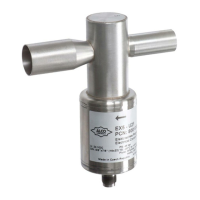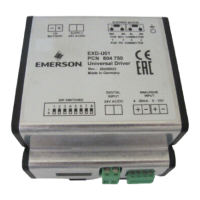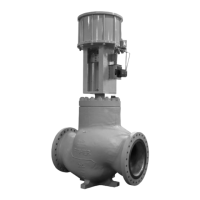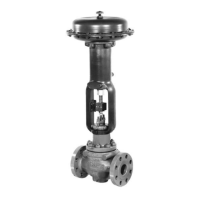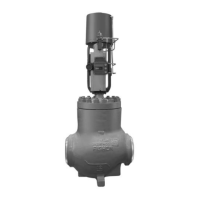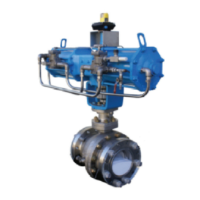Safety
Information
Introduction Installation
PowerTools
Pro Software
Communications
How
Motion
Works
How I/O
Works
Configuring
an
Application
Programming
Starting and
Stopping
Motion
Starting and
Stopping
Programs
Parameter
Descriptions
Drive
Parameters
Used by
EZMotion
Diagnostics Glossary Index
EZMotion User/Programming Guide 83
Revision A8 www.controltechniques.com
devices suffer the same fate as the single-turn absolute encoder if the encoder moves past the absolute range of the multi-
turn device (4096 revs in this case). For example:
A 12-bit Multi-Turn Encoder reads a value of 5.35 revs on power up. If the device moves 10 revs in the positive direction,
the position feedback reads 15.35 revs. If the system is powered down and back up, the encoder would read 15.35 revs
since it is a multi-turn absolute encoder. If the system is powered-down again, and this time is moved 4096 revs in the
positive direction (causing us to exceed the absolute resolution of the encoder), the desired position feedback would be
4096 revs + 15.35 revs = 4111.35 revs. However, since the encoder in question only contains 12-bits (or 4096) revs of
absolute turns information, the feedback position reaches 4096 and starts over at zero. So the position feedback on power-
up would read 4111.35 revs - 4096 revs = 15.35 revs. Therefore, the encoder cannot differentiate between the 15.35
revolutions position that it was at after the first short move, or the 15.35 position that we are at after moving 4096 additional
revs.
So, regardless of the type of encoder (Single-Turn or Multi-Turn), if the motor moves outside the range of the absolute
encoder, the system must be homed again to establish the desired absolute home position of the machine.
NOTE
It is the user's responsibility to design the machine such that the encoder does not move outside of its supported absolute
range.
4. Disabling of Absolute Position Auto-Calculate Enable
If the user un-checks the Absolute Position Auto-Calculate Enable check box after the system has been homed, and then
downloads the configuration, the AbsoluteHomeDefined signal will be automatically reset. The previously stored home
position registers will not be cleared. Note that simply re-selecting the Absolute Position Auto-Calculate Enable check box and
downloading will not allow you to continue using the previously defined home position information. In order to again use the
automatic position calculation it is necessary to re-home the system.
5. Motor/Encoder Replacement
If the motor/encoder is repaired or replaced, it is necessary for the user to undefine the absolute home and then repeat the
homing procedure. This can be done using an actual Home motion profile, or using the UndefineHome/DefineHome functions.
This is necessary because the new or repaired motor/encoder almost certainly will not be mounted with the exact same
absolute position when at the machine home position. There is no way for EZMotion to monitor that this scenario has
occurred, so it is up to the user to manually undefine the home, and then repeat the homing procedure.
6. Change in User Unit Scaling
If the user changes the User Unit Scaling for either the motor axis or the master axis, the respective AbsHomeDefined signal
will automatically be cleared. This must be done since the relationship between the stored values of the Absolute Home Rev
Count/Posn and Absolute Home Position in User Units is no longer valid.
8.4.6 Virtual Master View
The Virtual Master View is used to create a simulated encoder output. It generates an encoder stream of counts without the
actual operation of a motor. This count can be used by the drive itself as an input to the Master Source (MasterAxis.Source). It
can also be transmitted to other drives through the Sync Encoder Output connector and into their Master Sync Input

